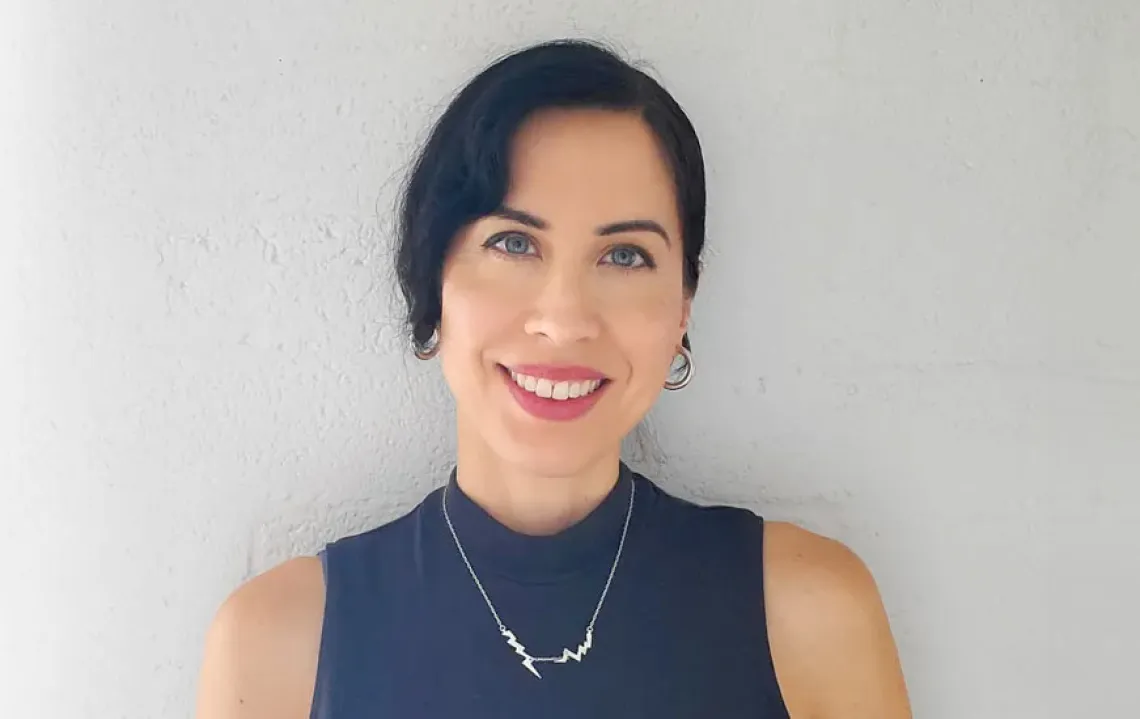Design Thinking: Marie Saldaña, Assistant Professor
INFOSCI FACULTY PROFILE

I try to encourage design thinking to foster a creative mindset—prototype, iterate, test and critique, and repeat. I’ve found that being able to trust the process rather than focus on a specific outcome... can often lead to surprising results.
Dr. Marie Saldaña, an assistant professor who earned her PhD in Architecture from UCLA in 2015, joined the College of Information Science in fall 2024 because of its transdisciplinary approaches. With a focus on cultural heritage informatics, she is currently on research leave with a fellowship from the National Endowment for the Humanities, a prestigious award that has a 7% funding ratio.
What brought you to the University of Arizona College of Information Science and tell us about your work prior to joining U of A.
After earning my PhD in Architecture at UCLA, I was affiliated with humanities departments for about six years, specializing in digital humanities, spatial humanities and digital history. I had postdoctoral fellowships at the University of North Carolina - Chapel Hill, Rice University in Houston, and a staff position at Stanford University. A few years ago, I transitioned back to architecture and design, becoming an assistant professor of interior architecture at the University of Tennessee in 2021. I taught design studios at UT for three years before joining the University of Arizona.
I came here because the job description for teaching and research in “cultural heritage informatics” sounded like it fit me perfectly! I felt right at home in the College of Information Science because it welcomes transdisciplinary approaches. Also, I grew up in Texas and California and I wanted to be back in the Southwest, especially because it’s the region that is the focus of my current work.

The Manuel Sanchez house, also known as the Amador Vela store, is located on the plaza in San Ygnacio, Texas. It was built of sandstone blocks around 1870, and is an example of the regional vernacular architecture of South Texas. Photo by Marie Saldaña.
What is your current research, and what most excites you about this work?
This year (2024-25) I am on research leave with a fellowship from the National Endowment for the Humanities. I am working on a book project that explores the cultural heritage of a region that is often overlooked, the Nueces Strip or “Wild Horse Desert” of South Texas. Ranching families with deep roots in Northern Mexico have lived there for generations, and I hope my project will make the both the tangible (architectural and landscape) and intangible (social and family) structures of their culture and history more visible. I am excited that this year I will have time to write up some of the information I have been uncovering over the past several years. I am also looking forward to experimenting with innovative ways to turn this data into a series of multimedia stories.

Interior of the casa grande at Rancho San José de los Corralitos, Zapata County, Texas. This building dates from around 1763, a time when frontier settlements were exposed to Apache and Comanche attacks. Homes were built like miniature fortresses with troneras (loopholes) instead of windows. Photo by Marie Saldaña.
How do you bring your research into your teaching?
I have taught in several different disciplines, but in all my courses I try to encourage design thinking to foster a creative mindset—prototype, iterate, test and critique, and repeat. I’ve found that being able to trust the process rather than focus on a specific outcome is a useful skill that I bring from my design background. It can often lead to surprising results, and I love it when my students exceed their own expectations.

Families of the Wild Horse Desert intermarried frequently over generations resulting in complex networks of kinship and patronage. Data visualizations can help us understand entanglements of identity and placemaking, as well as the extent of Mexican roots in South Texas. This is one attempt to map out the relationships among the families of La Salada ranch in Jim Hogg County, Texas, where descendants of a ranch established in the 1760s occupied the land through the 20th century. Image by Marie Saldaña.
Beyond teaching and research, what are your passions?
I love the desert! I used to spend lots of time in the Mojave Desert in California. I enjoy being in motion outdoors—walking my dog, running, hiking, road tripping.
Learn more about Marie Saldaña on her faculty page, or explore ways you can support the dynamic, student-invested faculty of the College of Information Science.

